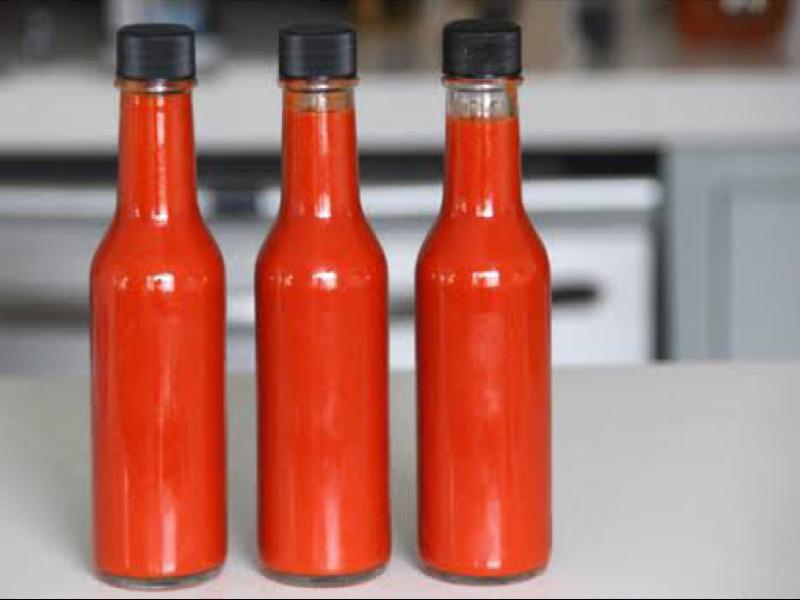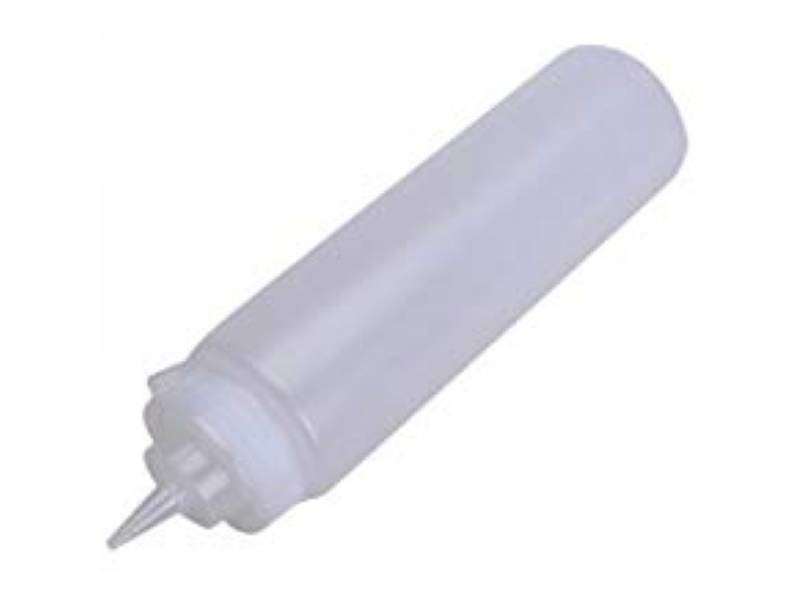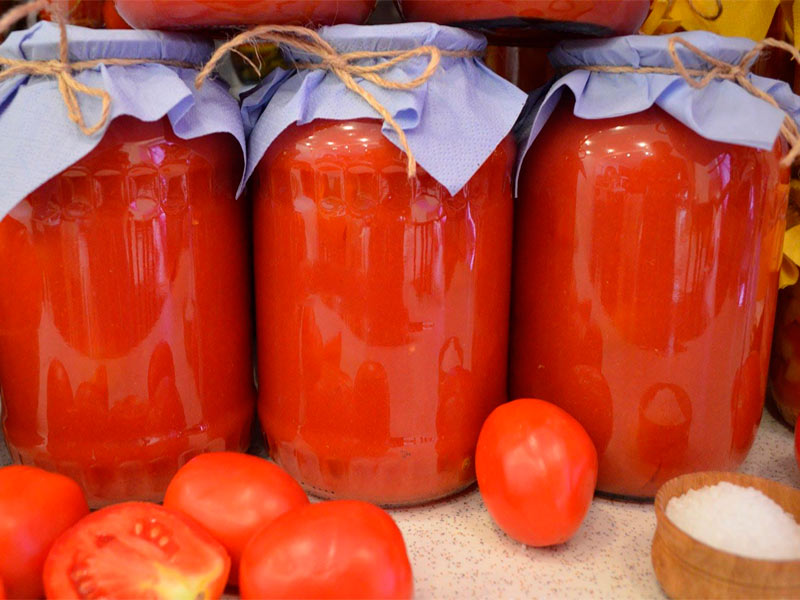The Revolution of Sauce Bottles: From Traditional to Innovative
Introduction:
Sauce bottles are a ubiquitous sight in kitchens, restaurants, and grocery stores around the world. These containers play a crucial role in ensuring the preservation, storage, and convenience of various liquid condiments, ranging from ketchups and mustards to hot sauces and dressings. Over the years, sauce bottles have evolved significantly, with manufacturers constantly striving to improve functionality, durability, and aesthetics. In this article, we will explore the evolution of sauce bottles, focusing on their history, types, materials, and innovations that have transformed the industry.
1. Historical Significance of Sauce Bottles:
Sauce bottles have a rich history that dates back to ancient times. Historical records indicate that ancient civilizations, such as the Romans and Chinese, used various containers to store and transport sauces. These early containers were made from materials like clay, animal skins, and glass. However, it was during the Industrial Revolution in the 19th century that the production of sauce bottles experienced a significant transformation, with the emergence of mechanized glass production techniques.
2. Evolution of Sauce Bottle Materials:
a. Glass Bottles: Glass has been the most common material used for sauce bottles due to its non-reactive nature and ability to preserve the flavor and quality of sauces. Traditional glass bottles are often clear or transparent, allowing consumers to easily identify the contents and quantity remaining. Colored glass bottles, such as those used for Worcestershire sauce, were also popular in the early days.
b. Plastic Bottles: The rise of plastic materials in the mid-20th century led to the adoption of plastic sauce bottles. These containers offered numerous advantages, including lightweight, shatterproof, and cost-effective alternatives to glass. Plastic sauce bottles are widely used in the food service industry due to their durability and ease of handling.
c. Squeeze Bottles: Squeeze bottles revolutionized the sauce industry by providing a convenient method for dispensing sauces. These bottles feature a narrow spout or nozzle and a compressible body, allowing users to control the amount of sauce being dispensed. Squeeze bottles are commonly made from plastic, including high-density polyethylene (HDPE), which is food safe and easy to clean.
3. Types of Sauce Bottles:
a. Traditional Bottles: Traditional sauce bottles are typically cylindrical or rectangular in shape, with narrow openings and screw-on caps or corks. These bottles suit a wide range of sauces, including ketchup, mustard, soy sauce, and mayonnaise. They are commonly found in supermarkets and are available in various sizes to cater to different consumer needs.
b. Wide-Mouth Bottles: Wide-mouth bottles have a larger opening than traditional bottles, making them ideal for chunkier sauces such as salsa, spaghetti sauce, and relishes. These bottles allow for easy filling and convenient consumption, especially when using utensils or pouring directly onto food.
c. Upside-Down Bottles: Upside-down sauce bottles, also known as inverted bottles, offer a unique design that allows gravity to keep the sauce near the opening for easy dispensing. These bottles are commonly used for liquid condiments such as ketchup, barbecue sauce, and syrup. Upside-down bottles are equipped with a special closure that prevents leakage when stored upright.

d. Portion-Control Bottles: Portion-control sauce bottles are specifically designed to dispense a standardized amount of sauce per serving. These bottles are commonly used in the food service industry to regulate portion sizes, ensuring consistent flavor and cost control. Portion-control sauce bottles are typically made of plastic and often come with a snap-on cap for easy opening and closing.
4. Innovations in Sauce Bottle Design:
a. Drip-Free and Anti-Clogging Cap Technology: Sauce bottle manufacturers have developed innovative cap designs that minimize mess and clogging. These advanced caps feature integrated valves or spouts that prevent drips and ensure a smooth and controlled flow of sauce. The anti-clogging cap technology has greatly enhanced user experience, eliminating the frustration of dealing with messy sauce dispensing.
b. Squeeze & Pour Technology: Some sauce bottles incorporate squeeze and pour technology, allowing users to alternate between squeeze dispensing and pouring. This feature provides versatility, allowing for both controlled application and effortless pouring, depending on the user’s preference and specific culinary requirements.
c. Customizable Bottle Shapes and Sizes: Manufacturers now offer customizable bottle shapes and sizes, allowing businesses to create a unique brand identity. This flexibility in design helps companies stand out in a competitive market, fostering brand recognition and consumer loyalty.
d. Tamper-Evident Packaging: In response to growing concerns about product safety and integrity, sauce bottle manufacturers have introduced tamper-evident packaging solutions. These include shrink bands, induction seals, and tear strips, which provide visible evidence if a bottle has been tampered with, ensuring consumer confidence in the product’s quality and safety.
Conclusion:
The evolution of sauce bottles has come a long way since their humble beginnings in ancient civilizations. From traditional glass bottles to innovative plastic squeeze bottles, the industry has continually adapted to meet the demands of consumers for convenience, aesthetic appeal, and functionality. Manufacturers have embraced new materials, advanced cap technologies, customizable designs, and tamper-evident packaging to enhance user experience and ensure product integrity. As the sauce industry continues to evolve, it is clear that sauce bottles will remain an essential conduit for delivering our favorite condiments while also driving innovation in the food packaging industry.I. The Growing Demand for Sauce Bottles in the Market:
The sauce bottle market has witnessed significant growth in recent years. This can be attributed to several factors, including the increasing popularity of global cuisines, the rise of on-the-go and convenience food consumption, and the growing demand for sustainable packaging solutions. As consumers become more adventurous with their food choices, the need for a wide variety of sauces to accompany different dishes has also expanded. This has created a substantial demand for sauce bottles in various sizes, shapes, and materials to cater to diverse consumer preferences.
Additionally, the food service industry has played a crucial role in driving the demand for sauce bottles. Restaurants, fast food chains, and catering businesses require large quantities of sauce bottles for their day-to-day operations. From condiments served alongside meals to individual sauce packets, these establishments rely on sauce bottles to ensure the consistent and hygienic dispensing of sauces to customers.
II. Sustainability and Eco-Friendly Packaging Solutions:
In recent years, there has been heightened awareness about the environmental impact of plastic packaging. As a result, sauce bottle manufacturers are actively seeking sustainable alternatives to conventional plastic bottles. One approach is the use of biodegradable materials such as PLA (polylactic acid), a plant-based plastic derived from renewable resources like cornstarch. These materials offer similar functionality and durability as traditional plastics but have a reduced environmental footprint.
Furthermore, companies are exploring innovative packaging solutions, such as refillable sauce bottles and single-use packets made from compostable materials. Refillable sauce bottles not only reduce plastic waste but also provide cost savings to customers who can purchase larger volumes of sauce and refill their bottles as needed.
III. Design and Branding Opportunities:

Sauce bottles present an advantageous platform for companies to reinforce their brand identities. Customizable bottle shapes, sizes, and labeling options allow businesses to create a unique visual presence on store shelves.
By investing in attractive and distinctive packaging designs, companies can catch the attention of consumers and differentiate their products from competitors. A sleek and modern bottle design can convey a premium brand image, while a more playful and colorful design may appeal to younger, trend-conscious consumers.
In addition to visual aesthetics, companies can also consider incorporating QR codes or augmented reality elements on their sauce bottles. These interactive features can provide customers with access to additional information, recipes, or promotions, enhancing the overall user experience and driving brand engagement.
IV. Quality Control and Safety Standards:
As sauce bottles are used for consumable products, maintaining high standards of quality control and safety is of utmost importance. Manufacturers and businesses must comply with international food safety regulations, ensuring that the packaging materials and production processes do not compromise the integrity of the sauces.
Tamper-evident packaging solutions, such as induction seals and shrink bands, provide visible indications if a bottle has been opened or tampered with before purchase. These measures help to safeguard consumer health and build trust in the product. Transparent packaging materials and clear labeling also allow consumers to make informed decisions about the quality and freshness of the sauce.
V. Convenience and Ease of Use:
One of the key considerations for sauce bottle manufacturers is creating bottles that provide convenience and ease of use for consumers. Squeeze bottles, with their narrow spouts and compressible bodies, allow for precise dispensing and controlled flow. This feature is particularly valuable for sauces that require careful portioning, such as dressings or syrups.
Ergonomic design elements like easy-grip caps, anti-slip features, and non-drip pouring spouts further enhance the user experience. Sauce bottles that are designed to be dishwasher safe and easy to clean also save time and effort for consumers, making them more likely to choose products with user-friendly packaging.
VI. Distribution and Storage Efficiency:
Efficient distribution and storage are critical considerations in the sauce bottle industry. Manufacturers need to optimize packaging designs to ensure they occupy minimal space in transportation and storage. Flat-sided bottle designs and stackable packaging solutions help to maximize warehouse space, reduce shipping costs, and minimize the environmental impact associated with transportation.
For businesses that rely on e-commerce for sales, lightweight and sturdy packaging options are essential to minimize shipping costs and reduce the risk of damage during transit. Additionally, sauce bottles that are compatible with automated filling and sealing machines can streamline production processes, enabling faster packaging and higher output.
VII. Cost Considerations:
The cost of sauce bottles is an important factor for both manufacturers and businesses. While plastic bottles are generally more cost-effective than glass, manufacturers must balance the need for affordability with durability, safety, and sustainability.

Businesses, on the other hand, need to consider the overall cost-to-value ratio when selecting sauce bottles. Lower-cost options may be suitable for single-use packets or low-value condiments, while premium packaging may be warranted for high-end sauces and gourmet brands. Striking the right balance between cost and quality is crucial to ensure profitability and customer satisfaction.
VIII. Innovations in Sauce Bottle Closure Systems:
The closure system of a sauce bottle plays a vital role in preventing leaks, maintaining freshness, and ensuring ease of use. Manufacturers are continuously developing innovative closure systems to address these priorities.
Flip-top caps with self-sealing mechanisms offer convenience by allowing users to open and close the bottle with one hand, while maintaining a tight seal to prevent spills and contamination. Similarly, twist-off caps provide an airtight seal, ensuring the longevity of the sauce’s flavor and consistency.
Some manufacturers are exploring alternative closure systems, such as pumps or sprayers, which provide controlled and measured dispensing for liquid sauces. These closures are particularly employed in specialty products, where precise dosage is essential, such as high-end condiments or cooking sauces.
IX. The Role of Sauce Bottles in Marketing and Promotions:
Sauce bottles offer excellent opportunities for marketing and promotions. Companies can leverage packaging space to display brand logos, product information, recipes, or marketing messages. Limited edition bottles featuring unique designs or collaborations with popular artists or influencers can create excitement and drive sales.
Additionally, promotional strategies like bundling multiple sauces together or offering special discounts on bulk purchases can encourage consumers to try new flavors and expand their sauce repertoire. Combining interactive packaging features, such as QR codes or contests, with social media campaigns enables brands to engage directly with consumers and generate valuable user-generated content.
X. Future Trends and Opportunities:
The future of sauce bottles lies in continued innovation and adaptation to changing consumer demands. As sustainability and environmental consciousness become increasingly important, the development of biodegradable and compostable materials for sauce bottle production is likely to gain momentum.
Advancements in smart packaging technology may also offer exciting possibilities. Smart sauce bottles equipped with sensors that monitor freshness, temperature, or ingredient levels could provide consumers with real-time information about the sauce’s quality, allowing for a more informed and enjoyable culinary experience.
Furthermore, as personalized nutrition gains traction, the customization of sauce bottles to accommodate individual dietary preferences and requirements may become a significant market segment. Sauce bottles that cater to specific diets, such as gluten-free, vegan, or low-sodium options, will likely appeal to health-conscious consumers.
Conclusion:
Sauce bottles have evolved from simple glass containers to sophisticated packaging solutions that cater to the diverse needs and preferences of consumers. Manufacturers recognize the importance of sustainability, convenience, and visual appeal in driving sales and brand loyalty. By embracing innovative packaging materials, designs, closure systems, and promotional techniques, the sauce bottle industry continues to redefine the way sauces are stored, dispensed, and enjoyed. As consumer expectations and technological advancements continue to shape the market, the future of sauce bottles looks promising, with endless possibilities for creativity, functionality, and sustainability.









